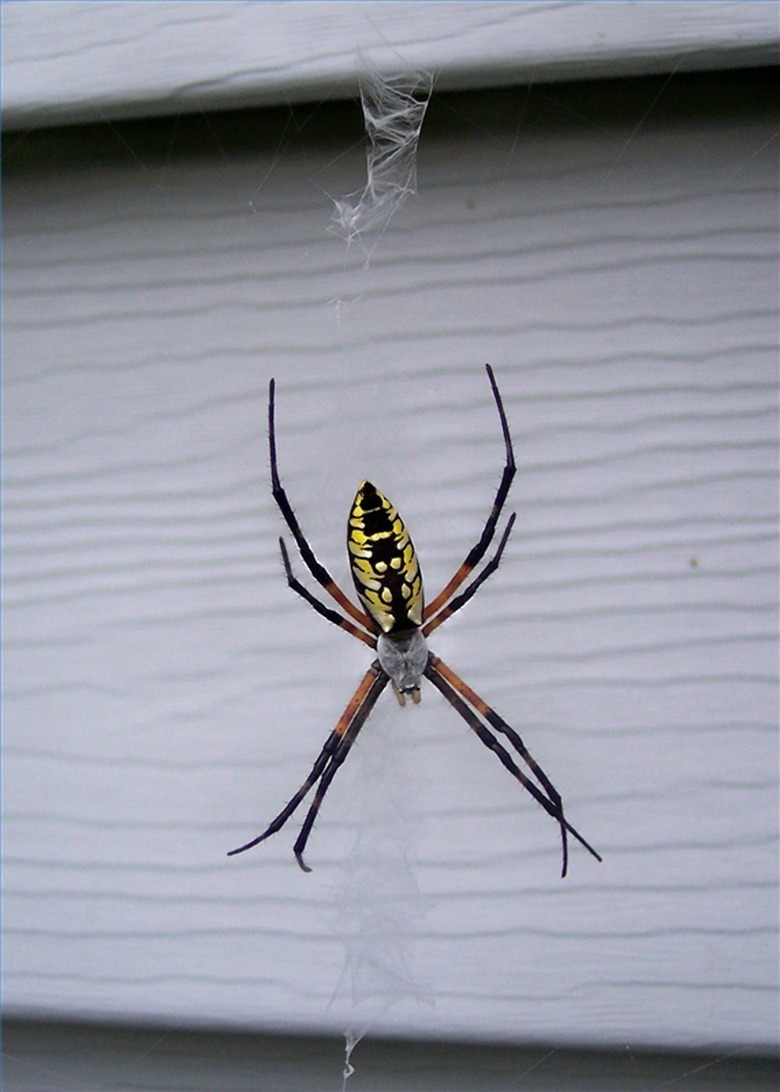How To Identify Spiders In South Carolina
South Carolina, like most states, is home and habitat to many species of spiders. Learning how to tell them apart is a good idea for many reasons.One is so you'll know more about your environment and appreciate what you have and how to live with it. It also helps to know that many spiders have venom, but most will not cause harm to humans unless you have a sensitivity that causes an allergic reaction. Learning about the statistics will helps you lose some of your fear of this beneficial creature because most are not apt to cause harm. However, an ounce of prevention is always worth a pound of cure.
Step 1
Study photographs of local spiders to become familiar with the differing types. Most libraries will have reference books on this subject, and if they have a copy machine, you could make copies to study at your leisure for personal use or to share with a class you are teaching. There are some very good online references to check with professional photographs.
Step 2
Educate yourself on the habitats of the spiders so that when you come across one, its habitat will help with identification. Certain spiders have adapted to their environments so that, chameleon like, they can be hard to spot if you don't know where they like to build their webs and nests.
Step 3
Become aware of how and where the spiders spin their webs. This will also help with identifying the different types of spiders in South Carolina. The black and yellow garden spider is nicknamed the Writing Spider because of the zig zags it spins into it's web, making it easy to identify the maker of the web. The black widow likes to build a web in protected, hidden places.
Step 4
Memorize the coloring and markers of the different species. All species will have the same color and marks with very little variation. The black and yellow garden spider is always black and yellow. The markings will vary somewhat and the colors may not be as vibrant on one as on another, but they will share the same colors. The Southern Black Widow spider is always black with the red hourglass on it's underbelly, although sometimes instead of red it can be orange, yellow or white. Usually it will be red, but it will always be an hourglass shape. Knowing these facts will give you the confidence to identify them correctly.
Step 5
Buy a field book to keep with you for identifying purposes. Publishers have books geared towards certain areas so that if you purchased a book about insects or arachnids in the Southeast, it would include spiders that live in South Carolina with descriptive text and photographs.
TL;DR (Too Long; Didn't Read)
Make a collage of the different spiders to help memorize the different spiders in South Carolina. Many spiders are beautifully colorful and a collage of their photographs could be framed as art. Make a poster for a classroom. Create graphic tests to see how many spiders you or your students can identify correctly.
Warning
Some spiders' venom is not harmful to humans but some are and these, like poisonous snakes, are important to be able to identify for safety reasons. Many venomous spiders are not aggressive and will hide from what they perceive as predator,s making them hard to see and avoid; be careful when around areas known to be spider habitats. Make it a point to know where spiders like to live.
Cite This Article
MLA
Writer, Contributing. "How To Identify Spiders In South Carolina" sciencing.com, https://www.sciencing.com/identify-spiders-south-carolina-4531965/. 13 March 2018.
APA
Writer, Contributing. (2018, March 13). How To Identify Spiders In South Carolina. sciencing.com. Retrieved from https://www.sciencing.com/identify-spiders-south-carolina-4531965/
Chicago
Writer, Contributing. How To Identify Spiders In South Carolina last modified March 24, 2022. https://www.sciencing.com/identify-spiders-south-carolina-4531965/
